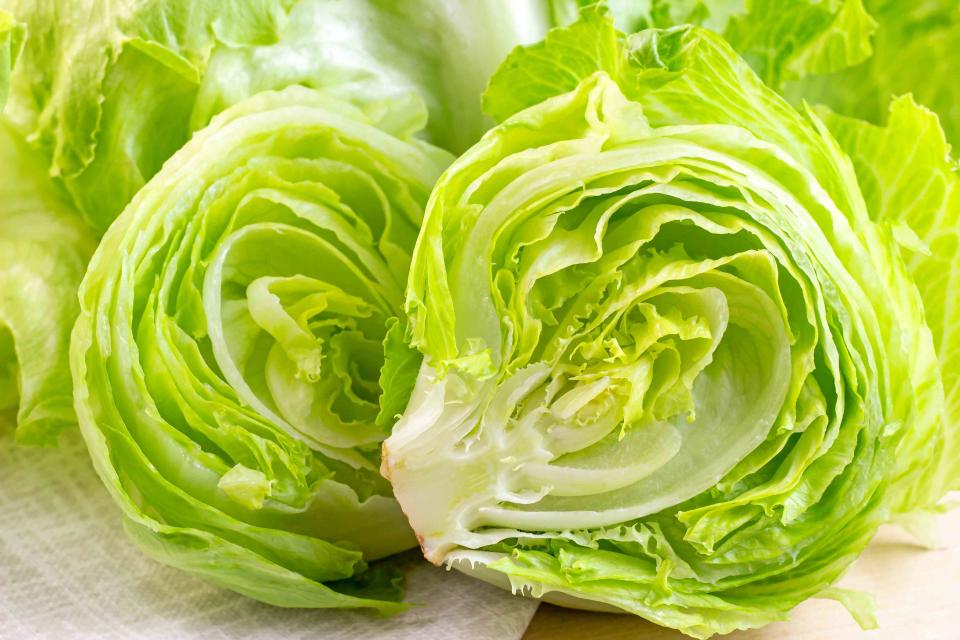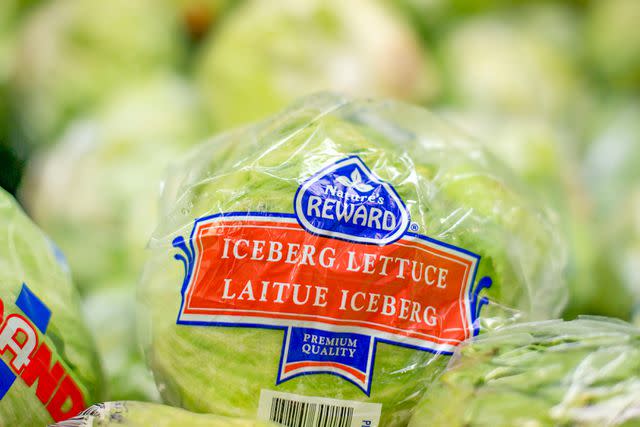The Only Way to Prevent Lettuce From Getting Slimy and Gross
An expert weighs in on the best way to store a head of lettuce.

Simply Recipes / Getty Images
There’s something I find so promising about a fresh head of lettuce—all that crispness ready to be piled onto my sandwiches and tossed into vibrant salads. But my excitement quickly turns to disappointment when I open the crisper drawer to find a soggy, wilted mess. This all-too-common experience made me wonder what the best way to store lettuce is.
Keeping your lettuce fresher for longer is all about moisture and storage, says Emily Moyer, Vice President of Regulatory Compliance and Global Food Safety for the International Fresh Produce Association.
“The big thing to combat spoilage is not leaving excess water on the lettuce, so don’t wash head lettuce until you’re ready to eat it,” Moyer says.
Not only should you avoid washing lettuce right when you get home from the store, but you should also keep it whole. “Cutting the lettuce exposes more surface area to lose moisture,” says Moyer. “And more surface area that’s susceptible to mold/bacteria in the environment, so don’t cut it until you’re ready to eat.”
Waiting to wash or cut lettuce until right before you serve it keeps extra water from collecting on the leaves and reduces the amount of surface area susceptible to mold and bacteria. Microorganisms typically grow faster when moisture and oxygen are present.
How To Store Lettuce
Lettuce keeps better in high humidity, Moyer says, so if your refrigerator has a crisper drawer where you can control the humidity, set it to high humidity and store your lettuce—still wrapped in its original packaging—in that drawer. As for temperature, the U.S. Food and Drug Administration recommends keeping your refrigerator at or below 40°F for ideal food storage.
It’s also key to watch which produce you keep with lettuce. Don’t store leafy greens near avocados, apples, or other varieties of produce that release a lot of ethylene. Ethylene is a gas released by some fruits and vegetables that can cause other types of produce to ripen (and go bad) faster. Lettuce is sensitive to ethylene, which means it can spoil more quickly when stored near those foods.
Depending on how you store it, the shelf life for whole heads of lettuce can vary from one to three weeks. “Shelf life will depend on how old the product is when purchased, and whether ideal storage conditions are maintained once at home,” says Moyer. Since it’s impossible to know how old lettuce is when you buy it, storing it under the right conditions is even more important.

Simply Recipes / Getty Images
How To Revive Wilted Lettuce
If your lettuce is looking a little worse for wear, you may be able to perk it up. Moyer suggests placing it in a bowl of ice water and letting it soak for 15 to 20 minutes. Rinse it under cold, running water, let it drain well, then pat it dry (or give it a whirl in a salad spinner) and use it right away.
“You should not store the revived lettuce to use at a later date because the excess moisture added back into the lettuce will increase the spoilage rate,” Moyer says.
What About Bagged Lettuce?
Bagged greens have a whole different set of rules than whole lettuce. To keep it fresh, don’t open it until you’re ready to eat it. Once opened, you can store the lettuce in its original bag, but squeezing out any extra air and fastening the bag with a clip will extend its shelf life.
“Cut, bagged lettuce does not need to be rewashed at home,” Moyer says. “If you choose to wash it at home, it can reduce the shelf life if excess water remains on the lettuce.”
Read More: The Only Way To Prevent Bagged Salads and Greens From Rotting
Read the original article on Simply Recipes.

